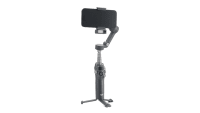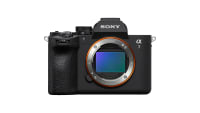Will Anyone Ever Care About HDR?
What is High Dynamic Range video? Why should I care about it or want it? We've got answers to all your questions right here.
Jeff Greenberg • May 18, 2022

So you’ve likely been out shopping and seen new TVs boasting “HDR” picture quality, and thought to yourself “What is HDR?” More importantly, should I really care about another new display tech after so many have fizzled? The answer lies in the dream: We all want a more cinematic experience at home. HDR is part of that path.
As the name suggests, High Dynamic Range means displaying more visual information, especially in the brights/highlights, and more/deeper color. Of course, there’s more to it than just “more”—but that’s the 10k foot view. Yet, if you’re anything like me, you’re cynical about new television technologies.
After all, we’ve been told that each of these were going to be life-changing:
- Stereoscopic (3D) TVs.
- VR Video (headset)
- 4K TVs (more pixels!)
It’s true that each of those provide a somewhat better viewing experience. But none of them has made a real difference. Heck, despite the fact that you’d be hard pressed to find a new TV without 4K, almost nothing is broadcast over the air or via cable in that resolution. So why should HDR be any different?
Stereoscopic provided a greater level of immersion. Finding content or the glasses made it harder to catch on along with good storytelling that used the medium well—aside from Avatar.
VR Video is waning at the moment. It’s excellent in short bursts, but do you really want to wear a headset for a feature-length film? This may be a technology best served at museums or other things that offer an immersive/interactive experience.
Back to 4K television: Meh. You can’t even see the difference between it and HD. Seriously. The viewing distance at which your eyes can perceive all those extra pixels for a 65-inch TV is 47 inches. That’s under 4 feet. (And that information comes from Sony.]
But each of those technologies has value, even if it’s not directly in our homes. Stereoscopic is immersive enough that blockbusters get manually converted by VFX teams. VR is literally the most immersive medium—it makes you feel as if you are there. And I see a huge advantage in shooting films in 4K resolution (and above) and finishing in HD. Even though many feature films are distributed in 2.7k for the last decade, few complain.
So, why will HDR stick? Why should you care about HDR?
Because everything will fall somewhere on the spectrum of looking a little better to breathtaking.
This is part of the professional standard (known as REC 2100]. It provides a workflow to work from capture to display, with a more extensive range of color and brightness.
Sadly, you’ve never really seen reds and yellows on a TV—because as they get brighter, you lose the color information due to the limits of the number of colors shown. They blow out to white rather than really rich/colorful red or yellow. (Jargon warning: Non-HDR materials are now called “SDR”—Standard Dynamic Range. I’m absolutely trying to avoid the jargon and math about this. You’ll see terms like Dolby HDR, HDR 10, HDR 10+, and HLG.)
We can talk/debate about which flavor is best to create/master HDR content. We can debate whether it’s better to grade HDR and do an SDR trim pass or the reverse.
From a content creation point of view? The key online platforms—Disney +, Netflix, Apple TV, and Theater releases—all have HDR requirements for their deliverables. If this is what you’re aiming for, better plan for it now!
As a consumer, iMovie on the phone (or the Mac) can handle HDR creation, editing, and even transform it to SDR. So can the primary post-production tools for editorial.
But the question here is this: Will anyone ever care about HDR? And my answer is “Yes, yes, YES!”
In less than 5 years, I expect you to find 95% of TVs on the market to support HDR along with every iOS and Mac display. It’s not a question of if you care—it’s more of when you will adopt it. Already, I’m shooting 4k video of my kids in HDR on my iPhone.
The best resource I’ve seen to simulate this? The Dolby Vision site, as their technology is where HDR originates from.
Which would lead to a significant question for a future article: “How can you start working in HDR with the least amount of pain?”
Other topics you might like
Give Your Smartphone Videography 360-Degrees of Spin With the New DJI Osmo Mobile 8
Updated on Dec 5, 2025
Not Here That Long: Filmmaker Ty Evans Built a Career on Risk, Reward, Rails and Rotors
Updated on Dec 4, 2025
Expand Your High-End Video Editing Workspace With LG’s New UltraFine 6K Monitor
Updated on Nov 11, 2025
 USA + International
USA + International OWC Canda
OWC Canda OWC Europe
OWC Europe


